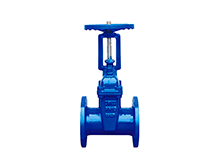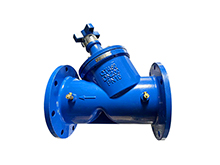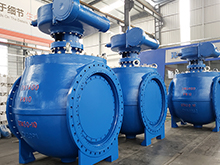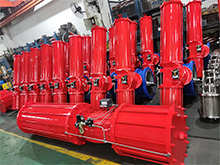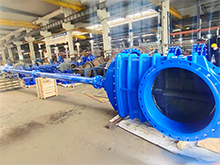- Gate valve
-
- BS5163 rising stem soft seal gate valveDN1000 Extension stem double flange soft seal gate valveWEIZIDOMDIN F4 resilient seated gate valveDN450-1200 Resilient Seated Gate ValveDIN F5 resilient seated gate valveSocket connection soft seal gate valveWEIZIDOMUnderground cap soft seal gate valveHard seal gate valveAPI slab Gate ValveStainless steel flange gate valveWafer knife gate valvePneumatic gate valveSoft seal gate valveExtension stem gate valveUL/FM fire protection groove ends gate valveRising stem forged steel gate valvecarbon steel gate valveStainless steel threaded gate valveDIN soft seal gate valveANSI soft sealing gate valve 200PSICast iron gate valveBS resilient seated gate valve
- Butterfly valve
-
- DN900 pneumatic triple eccentric hard seal butterfly valveD643H Triple Eccentric Butterfly ValveD343H Hard seal butterfly valveMulti standard EPDM seated butterfly valveSingle flange butterfly valveDN2000 Double eccentric butterfly valveFlange butterfly valveLug butterfly valveWafer butterfly valve with handleWorm gear operated butterfly valveWafer lined fluorine butterfly valveStainless steel wafer butterfly valveStainless steel flanged butterfly valveThree eccentric flange butterfly valvePneumatic flanged butterfly valvePneumatic wafer butterfly valveTriple eccentric butterfly valve wafer typeWafer butterfly valve ULC approvedInflatable seat butterfly valveHigh performance butterfly valveGrooved end butterfly valveElectric soft seal butterfly valveFlange fluorine lined butterfly valveHandle aluminum butterfly valveWorm Gear Aluminum Butterfly ValveFull PTFE lined butterfly valve wafer typeOne stem no-pin wafer butterfly valveMulti standard aluminum stem butterfly valveStainless Steel wafer Butterfly ValveAluminium handle operated lug butterfly valveLever Operated Flange Butterfly ValveButterfly valve stemButterfly valve discButterfly valve seat
- Ball valve
-
- DN1400 top-mounted eccentric semi-ball valveFlanged three-way ball valveFully welded ball valveNatural gas ball valveHigh platform flange ball valve1 PC ball valveFixed ball valvePTFE seat flanged ball valveMetal seat ball valveAPI 6D ball valve3 Piece ball valveFull Bore 3 way ball valve L-Port3 Way T-Port ball valve2PC Ball valve female thread stainless steel
- Globe Valve
-
- API Carbon Steel Globe ValveBellows Globe ValveStainless steel flange globe valveStainless steel thread S type globe valveStainless steel thread B type globe valveCast Steel Globe ValvePiston Globe ValveWCB Carbon Steel Globe Check Valveelectric motorized control stainless steel SS316 globe valveBrass Globe ValveCryogenic Globe valveHT200 Globe ValveThreaded Stainless Steel Globe ValveGG25 Globe ValveANSI API Cast Steel And Stainless Steel Globe valve
- Check valve
-
- Rubber seal check valveDN800 Slow closing check valveDN800 Rubber Disc Check ValveButterfly Buffering Check Valvecheck valve with counter weightSilent Check ValveWCB Swing check valveSwing Check ValveSingle Chip Check Valve H74WStainless Steel Wafer Check ValveSwing Start Check ValveFoot check valveAPI Swing Check ValveDIN Flange check valveSingle plate check valveLifting Check ValveBottom ValveHammer Diminish Noises Check ValveWafer Check ValveWafer dual plate check valve
- Control valve
-
- Static Balancing ValveCage Guided Sleeve Globe Control ValveDN1000 Piston Flow Regulating ValveDN1600 Electric Actuator Flow Regulating ValvePneumatic Flanged Butterfly ValvePneumatic Wafer Butterfly ValveAngle Seat ValvePneumatic gate valveElectric three-way control valveElectric sleeve control valve
- Water Meter
-
- Vertical Type Water MetersStainless steel threaded water meterPiston water meterPlastic water meterMore flow rotor dry water meterspiral vane flange water meterCI wotlman water meter with pulse outputLXCLG(R) Vertical removable element woltman cold (hot) water meterSingle flow rotor dry water meterPrepaid Token Water MeterElectromagnetic flowmeterRotary Piston Liquid Sealed Water MeterRotary Piston Liquid Sealed Water Meter
- Air valve
-
- Double ball exhaust valveDoubleair Air Valve SaudiDoubleair Air Valve Southeast AsiaDoubleair Air Valve South AmericaDouble Air ValveThreaded Air ValveSingle Air ValveTriple Functions Air ValveAutomatic Air Release ValveAutomatic release valveAutomatic exhaust valveComposite Exhaust Air ValveBrass exhaust valveDouble Ball Air Valve
- Pipe Repair & Coupling
-
- Flexible Multi-Function Pipe Coupling ZFJ-SSS Semi-Circle Pipe Repair Clamp SJW-HDuctile Iron Band Repair ClampStainless Steel Band Repair ClampDouble-Section Pipe Repair CouplingFolding Type Pipe RepairSingle-Section Multi-Function Pipe Coupling MF-SGear-Ring Type Multi-Function Pipe Coupling GR-SZBW Damping Corrugated Hose
- Dismantling Joint
-
- VSSJAFC(CC2F) Detachable Flange Transmission JointVSSJA-2(B2F) Double Flange Limited Expansion JointVSSJA-1(BF) Single Flange Limited Expansion JointVSSJA(AF) Flange Loose Expansion JointJGD-B Threaded Rubber JointZBW Damping Corrugated HoseKXT-S Flexible Dual-Spherical Rubber JointKXT Rubber Soft JointFlange Adaptor
Which Is Better: Gate Valve or Ball Valve?
Why Compare Gate Valves and Ball Valves?
In every pipeline system, selecting the right valve is crucial for ensuring efficiency, safety, and cost-effectiveness. Among the most common choices are gate valves and ball valves.
Both serve the purpose of controlling flow, but their design, operation, and performance are very different. Understanding these differences helps engineers, contractors, and end-users choose the best valve type for their specific application.
In this article, we compare gate valves vs ball valves in detail — covering structure, features, advantages, disadvantages, and recommended applications.
What is a Gate Valve?
A gate valve uses a sliding gate or wedge to block or allow the flow of fluid. When the gate is lifted, the valve is open; when lowered, the valve is closed.
Characteristics of Gate Valves:
Designed mainly for on/off flow control
Provide minimal flow resistance when fully open
Typically used in large-diameter pipelines
Operation is slower (requires multiple turns of the handwheel)
Common materials: ductile iron, carbon steel, stainless steel, bronze
Gate valves are widely used in water supply, wastewater treatment, power plants, and oil & gas pipelines.
What is a Ball Valve?
A ball valve uses a rotating ball with a bore (hole) through its center to control flow. By turning the handle 90 degrees, the ball rotates, opening or closing the passage.
Characteristics of Ball Valves:
Quarter-turn operation for fast open/close
Provides tight sealing with minimal leakage
Compact and lightweight design
Commonly made from stainless steel, carbon steel, brass, or PVC
Suitable for high-pressure and high-temperature applications
Ball valves are widely used in chemical plants, HVAC, food and beverage, oil & gas, and water treatment systems.
Gate Valve vs Ball Valve: Key Differences
✅ Operation
Gate Valve: Multi-turn operation, slower response.
Ball Valve: Quarter-turn operation, quick response.
✅ Flow Control
Gate Valve: Suitable for throttling (but not ideal for precise control).
Ball Valve: Mainly for on/off service, not ideal for throttling.
✅ Sealing Performance
Gate Valve: Good sealing but may allow slight leakage over time.
Ball Valve: Excellent sealing due to PTFE or elastomer seats, nearly zero leakage.
✅ Durability
Gate Valve: Durable in large-diameter, low-cycle applications.
Ball Valve: Durable in high-cycle, frequent operation systems.
✅ Maintenance
Gate Valve: More maintenance, prone to wear at the gate and seat.
Ball Valve: Low maintenance, easy to operate.
Applications: Where to Use Gate Valves vs Ball Valves?
✅ Best Applications for Gate Valves:
Water supply pipelines
Wastewater treatment systems
Irrigation systems
Oil and gas transport lines
Power plants
✅ Best Applications for Ball Valves:
Chemical and industrial processing
HVAC systems
Food and beverage industry
High-pressure steam and gas applications
Oil & gas refineries
Advantages and Disadvantages
Gate Valve Advantages:
✔ Suitable for large-diameter pipelines
✔ Low pressure drop when fully open
✔ Durable for infrequent operation
Gate Valve Disadvantages:
✘ Slow operation
✘ Prone to seat wear
✘ Larger size and heavier weight
Ball Valve Advantages:
✔ Quick quarter-turn operation
✔ Compact and lightweight
✔ Excellent sealing performance
✔ Low maintenance
Ball Valve Disadvantages:
✘ Not ideal for throttling
✘ Can be more expensive in larger diameters
Installation and Maintenance Considerations
Gate Valves:
Ensure vertical installation for smooth operation
Regularly check seat wear
Requires periodic lubrication
Ball Valves:
Install with proper alignment
Check seats and seals for wear
Minimal lubrication required
Why Choose WEIZIDOM for Ball Valves and Gate Valves?
At WEIZIDOM, we manufacture and supply both ball valves and gate valves for global customers:
✔ Factories across China – producing ductile iron, stainless steel, carbon steel, and brass valves
✔ Exported to 100+ countries
✔ Over 1000 successful project references
✔ OEM customization available
✔ Competitive pricing directly from the manufacturer
With years of industry experience, WEIZIDOM ensures that every valve meets international standards and customer requirements.
FAQ – Gate Valve vs Ball Valve
Q1: Which is better, gate valve or ball valve?
It depends on the application. For quick shut-off and tight sealing, choose a ball valve. For large-diameter pipelines with infrequent operation, a gate valve is more suitable.
Q2: Which valve lasts longer?
Both can last 10–15 years, but ball valves typically require less maintenance.
Q3: Can a ball valve replace a gate valve?
In many applications, yes. However, in large-diameter or throttling applications, a gate valve may still be preferred.
Q4: Which is more cost-effective?
Gate valves are generally cheaper for large diameters. Ball valves, while slightly more expensive, offer lower maintenance costs.
Q5: Which industries use gate valves and ball valves?
Gate valves: water supply, wastewater, irrigation, oil pipelines.
Ball valves: chemical plants, HVAC, steam, food and beverage.
The choice between a gate valve and a ball valve depends on your project’s specific requirements.
Choose a gate valve if you need durability in large-diameter pipelines with low-frequency operation.
Choose a ball valve if you need quick shut-off, excellent sealing, and minimal maintenance.
At WEIZIDOM, we offer both solutions, ensuring customers get the best valve for their applications.
Contact WEIZIDOM
Looking for a reliable ball valve and gate valve supplier in China?
At WEIZIDOM, we provide quality valves, competitive prices, and technical support.
Email: eileen@wsdsolution.com
Contact us today for catalogs and quotations.
Pre : Why Choose Stainless Steel Ball Valves?
Next : Back To List


